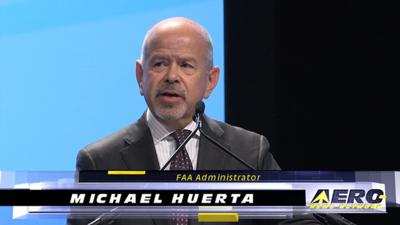Wed, Mar 09, 2016
NPRM, Based On Industry Recommendations, Would Improve Safety, Reduce Cost, FAA Says
The FAA has proposed a rule that overhauls the airworthiness standards for small general aviation airplanes. The FAA’s proposal, which is based on industry recommendations, would reduce the time it takes to get safety enhancing technologies for small airplanes into the marketplace while also reducing cost.

“This proposal would improve safety, reduce costs, and leverage innovation to ensure the highest level of safety is designed and built into small airplanes,” said U.S. Transportation Secretary Anthony Foxx. “General aviation is vital to the U.S. economy, and this proposal would benefit manufacturers, pilots, and the general aviation community as a whole.”
The Notice of Proposed Rulemaking restructures the existing certification standards and replaces the current prescriptive design requirements in Part 23 with performance-based standards that maintain the same level of safety. It would add new certification standards to address general aviation loss of control accidents and in-flight icing conditions. The proposal establishes performance- and risk-based divisions for airplanes with a maximum seating capacity of 19 passengers or less and a maximum takeoff weight of 19,000 pounds or less.
“This proposal would streamline how we approve new technologies for small piston-powered airplanes all the way to complex high-performance executive jets,” said FAA Administrator Michael Huerta. “The FAA’s collaboration with industry and international partners reflects a performance-based, flexible approach which would accommodate today’s rapidly changing aviation industry and technological advances now and in the future.”

The proposal responds to the FAA Modernization and Reform Act of 2012 and the Small Airplane Revitalization Act of 2013, which directed the FAA to streamline the approval of safety advancements for small general aviation aircraft. It also addresses recommendations from the FAA’s 2013 Part 23 Reorganization Aviation Rulemaking Advisory Committee.
The FAA estimates that the overall economic impact would be cost beneficial. This proposal would affect airplane manufacturers, engine manufacturers, and operators of affected equipment.
The comment period is 60 days from publication in the Federal Register. A video produced by the FAA highlights the benefits of the proposed rule.
(Source: FAA news release)
More News
Aero Linx: International Federation of Airworthiness (IFA) We aim to be the most internationally respected independent authority on the subject of Airworthiness. IFA uniquely combi>[...]
Ultrahigh Frequency (UHF) The frequency band between 300 and 3,000 MHz. The bank of radio frequencies used for military air/ground voice communications. In some instances this may >[...]
A Few Questions AND Answers To Help You Get MORE Out of ANN! 1) I forgot my password. How do I find it? 1) Easy... click here and give us your e-mail address--we'll send it to you >[...]
From 2019 (YouTube Edition): Learning To Paint Without Getting Any On Your Hands PPG's Aerospace Coatings Academy is a tool designed to teach everything one needs to know about all>[...]
Also: Sustainable Aircraft Test Put Aside, More Falcon 9 Ops, Wyoming ANG Rescue, Oreo Cookie Into Orbit Joby Aviation has reason to celebrate, recently completing its first full t>[...]
 ANN's Daily Aero-Linx (05.06.25)
ANN's Daily Aero-Linx (05.06.25) ANN's Daily Aero-Term (05.06.25): Ultrahigh Frequency (UHF)
ANN's Daily Aero-Term (05.06.25): Ultrahigh Frequency (UHF) ANN FAQ: Q&A 101
ANN FAQ: Q&A 101 Classic Aero-TV: Virtual Reality Painting--PPG Leverages Technology for Training
Classic Aero-TV: Virtual Reality Painting--PPG Leverages Technology for Training Airborne 05.02.25: Joby Crewed Milestone, Diamond Club, Canadian Pilot Insurance
Airborne 05.02.25: Joby Crewed Milestone, Diamond Club, Canadian Pilot Insurance




